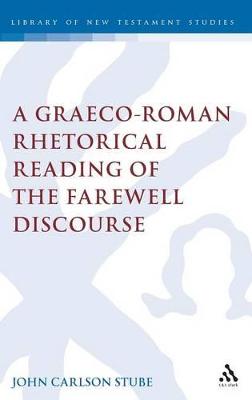The Library of New Testament Studies
1 total work
A Graeco-Roman Rhetorical Reading of the Farewell Discourse
by John C. Stube
Published 1 January 2006
"The Farewell Discourse" (John 13-17) is an unique and climactic portion of "John's Gospel", which serves as a hinge on which the entire Gospel narrative pivots from Jesus' public ministry to his Passion. Shallow readings of this Discourse often pass over or ignore significant aspects of the text, especially the instruction and preparation Jesus was giving, both in words and actions, to make ready his disciples to continue his mission to the world after his departure. Other readings (notably form-critical) see the text as disarranged and therefore not a coherent whole. A thorough analysis employing the elements of Greco-Roman rhetoric has shown that there is a rhetorical dimension to the Discourse which makes sense of the text as a coherent whole. "The Farewell Discourse" was found to follow a rhetorical arrangement which gives a literary explanation to some assumed form-critical problems, such as the ending at 14:31. Not only does this rhetorical structure give appropriate closure and transition with movement from one topic to another, it does so with a chiastic arrangement of the major topics.
Jesus is presented by the evangelist, with his words and actions, defining and modeling what his disciples are to be in their own soon-approaching ministry to the community of believers and to the world. He is shown giving persuasive words of comfort, encouragement, instruction, and motivation to his disciples as he prepares them to continue his mission after his departure.
Jesus is presented by the evangelist, with his words and actions, defining and modeling what his disciples are to be in their own soon-approaching ministry to the community of believers and to the world. He is shown giving persuasive words of comfort, encouragement, instruction, and motivation to his disciples as he prepares them to continue his mission after his departure.
